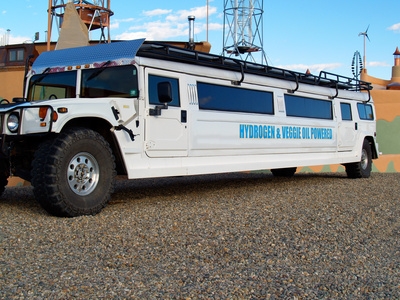
Hybrid hydrogen oxygen--HHO--generators are nothing new; a Phillipino engineer named Daniel Dingel built his first water-powered car as far back as 1968, and people are still doing it today. While many opt to purchase a pre-built unit (not a bad idea if you're new to the HHO scene and want a bolt-in installation) some people like to build their own. Like most interesting innovations, HHO generators rely on some pretty simple hardware to accomplish a number of complex tasks.
An HHO generator is made up of a stack of metal plates separated by 2/16 to 1/8 of an inch. The plate stack sits submerged in a mix of water and electrolyte (more on that), and every other plate is connected to either a positive or negative power source. When you apply power to the plates, it tries its best to cross the gap between them, encountering a thin layer of water on the way. The current breaks the water's hydrogen-oxygen bonds, and the resulting gases bubble to the top of the cell. The engine siphons those gases (now called oxyhydrogen or HHO) away and uses them as a combination fuel and fuel catalyst. (It helps the gasoline burn more efficiently.)
You can build a simple and effective "Joe-cell-type" HHO generator with the following: 10 3/16-inch thick, 2-inch diameter stainless steel automotive "fender washers"; a 1/8-inch thick, 8-inch long, 1/2-inch diameter Lexan tube; a 6-inch long, 1/4-inch diameter bolt and matching nut; a 5-inch long, 1/4-inch diameter piece of rubber "heat shrink" tubing; two stainless steel welding rod cores; four 1-inch diameter plastic washers; and two stainless metal washers the same size. The whole package should run you less than $20 at your local hardware store.
First, you'll want to grind a 1/4-inch deep flat spot on each of your washers. the easiest way to do this is to temporarily bolt them together with the bolt to make a solid cylinder, and then grind all the flats at once. Afterward, remove the bolt, slip the heat wrap over the threads all the way up to the head and set it in place with a lighter (this will insulate the bolt threads from the plates). Cut your Lexan tube into sections into plate spacers exactly 1/4-inch wide.
Hold the bolt with the head facing down, and (in this order) drop onto it a metal washer, a plastic washer, a large fender washer and a Lexan spacer. Afterward, drop another fender washer onto the spacer with its flat spot oriented exactly 180 degrees opposite the first. Install another spacer, and repeat the procedure until you run out of fender washers, making sure that each plate's flat spot is opposite the one below. Strip off the excess heat shrink, install a plastic washer, a metal washer and the retaining nut.
MIG weld the stainless steel rod cores to flat parts of the plates on both sides, and leave about 6 inches of wire core exposed as electrodes (terminals). Drop the whole assembly into a bottle full of purified water and apply 10 amps positive current to one terminal and negative to the other. The bubbles you'll see are HHO gas.